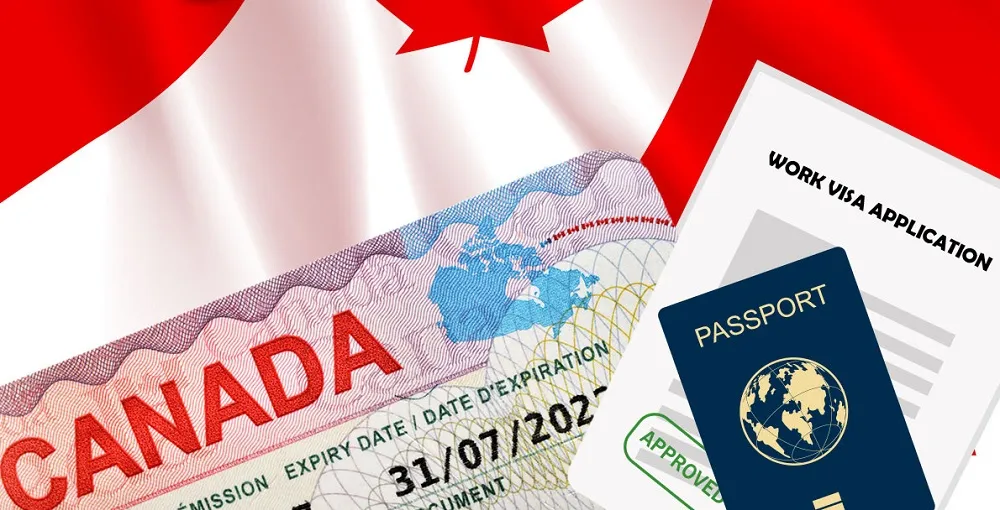Canada’s rich cultural diversity, thriving economy, and high quality of life make it an attractive destination for immigrants seeking new opportunities. Among the various immigration pathways, obtaining a Canadian work visa stands out as a practical and feasible option for many. In this comprehensive guide, we will walk you through the steps and requirements involved in securing a Canadian work visa as an immigrant or foreigner.
Types of Canadian Work Visas
Before diving into the application process, it’s crucial to understand the different types of Canadian work visas available. The most common categories include:
- Temporary Foreign Worker Program (TFWP): This program allows employers to hire foreign workers to fill temporary labor shortages. Applicants must have a valid job offer from a Canadian employer.
- International Mobility Program (IMP): This program is designed for foreign nationals who are exempt from the Labour Market Impact Assessment (LMIA) requirement, usually due to international agreements or reciprocal arrangements.
- Provincial Nominee Program (PNP): Provinces and territories in Canada have their own nominee programs that enable them to nominate individuals for permanent residence. Some PNP streams are specifically designed for workers with job offers.
Identifying Your Eligibility
The eligibility criteria for a Canadian work visa depend on the specific program under which you are applying. However, there are common factors that applicants must consider:
- Job Offer: Having a job offer from a Canadian employer is a fundamental requirement. The job offer must be genuine and meet certain criteria, such as being in a high-demand occupation.
- Labour Market Impact Assessment (LMIA): In some cases, employers may need to obtain an LMIA to demonstrate that hiring a foreign worker will not negatively impact the Canadian job market. Certain exemptions apply under the IMP.
- Work Experience and Education: Depending on the program, you may need to prove your work experience and educational qualifications. Some occupations may require specific certifications or licenses.
- Language Proficiency: Proficiency in English or French is often a prerequisite. Applicants may need to take language tests such as IELTS or CELPIP for English, or TEF for French.
- Health and Security Clearance: Applicants must undergo a medical examination to ensure they meet health requirements. Additionally, a security clearance may be required.
Navigating the VISA Application Process
Once you’ve determined your eligibility and gathered the necessary documents, the application process involves the following steps:
- Job Search and Offer: Secure a job offer from a Canadian employer. Ensure that the offer is genuine, and the employer is eligible to hire foreign workers.
- Labour Market Impact Assessment (LMIA): If required, the employer must obtain an LMIA from Employment and Social Development Canada (ESDC) to demonstrate the need for a foreign worker.
- Gather Necessary Documents: Collect all required documents, including your job offer letter, educational credentials, work experience certificates, language proficiency test results, and other supporting documents.
- Create an Express Entry Profile: If applying through the Express Entry system, create a profile and submit your Expression of Interest (EOI). Your profile will be ranked based on various factors, and top-ranking candidates will be invited to apply for permanent residence.
- Submit Application: Once you receive an invitation to apply, submit your complete application through the online portal. Pay the required fees and include all supporting documents.
- Biometrics and Medical Exam: Attend a biometrics appointment and undergo a medical examination as part of the health clearance process.
- Wait for Processing: The processing time for a Canadian work visa varies depending on the type of visa and the volume of applications. Stay informed about the status of your application through the online portal.
Post-Approval Steps
Once your Canadian work visa is approved, there are additional steps to take:
- Arrival in Canada: Upon arrival, comply with all entry requirements and regulations. Be prepared to show immigration officials your visa and other relevant documents.
- Social Insurance Number (SIN): Obtain a Social Insurance Number, which is necessary for working in Canada and accessing government benefits.
- Settling In: Familiarize yourself with Canadian culture, laws, and resources. Seek support from local immigrant services to facilitate your integration into Canadian society.
- Permanent Residency Pathways: Explore pathways to permanent residency, such as the Express Entry system or Provincial Nominee Programs, if your goal is to establish long-term roots in Canada.
Conclusion
Securing a Canadian work visa as an immigrant or foreigner requires careful planning, adherence to eligibility criteria, and a thorough understanding of the application process. By following the steps outlined in this comprehensive guide, you can navigate the complexities of immigration and increase your chances of success in obtaining a Canadian work visa. Remember, each case is unique, so it’s advisable to seek professional advice and assistance to ensure a smooth and successful application process. Your Canadian dream awaits – take the first step today!


